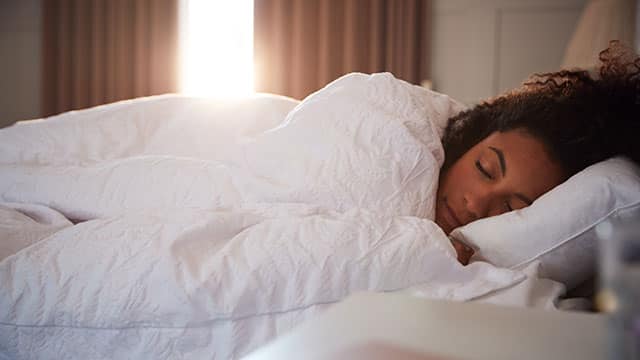What Is Sleep Apnea?
The three main types of sleep apnea are:
- Obstructive sleep apnea - This is the most common form of sleep apnea that occurs when your throat muscles relax to the point that they block off your airway for a period of time.
- Central sleep apnea - This type of sleep apnea occurs when your brain doesn't properly communicate to your muscles that they need to continue helping you breathe when you're asleep.
- Complex sleep apnea syndrome (aka treatment-emergent central sleep apnea) - This condition is a combination of both obstructive sleep apnea and central sleep apnea.
Sleep apnea can cause breathing to pause for just a few seconds or several minutes. The pauses aren't just disruptive for breathing; they also disrupt the quality of your sleep, regularly shifting you out of deep sleep into lighter sleep. If you often feel sleepy during the day, it could be because your sleep apnea isn't allowing you to get a deep, full night's rest.
Sleep apnea can also cause you to snore, and you may wake up in the morning with a dry mouth or a headache. Your saliva plays an important role in helping you maintain good oral hygiene, so it's an important condition to address. Keep water by your bed, and don't wait until you're thirsty to drink it. Getting a humidifier can help keep moisture in the air, particularly if you live in a dry climate.
What Does a Mandibular Advancement (MAD) Device Do?
MADs are usually recommended to treat mild forms of sleep apnea, reducing the symptoms and effects by moving your jaw into a forward position while you sleep. This position will expand your airway, helping you breathe better.
Although sleep apnea is the condition most commonly associated with a MAD, that isn't the only sleep issue it can treat. The devices can also be helpful if you snore or if you grind your teeth.
How to Get a Mandibular Advancement Device
Although you can find MADs for sale online or at your local drugstore, they are medical devices that work best when designed from a mold or scan of your mouth and custom fit specifically for your teeth and jaw. Contact your dental professional and ask them if they recommend a MAD for your individual needs, and if they do, they can have one custom made for you.
Potential Drawbacks of a Mandibular Advancement Device
According to the American Sleep Association, one of the biggest drawbacks of using a Mandibular Advancement Device is the potential for developing arthritis in the temporal mandibular joint or experiencing symptoms of TMJ disorder. Speak with your dental professional to determine if the MAD is best for your needs and ask what steps can be taken to reduce the risk of jaw joint problems and pain from using the device.
If you have sleep apnea, grind your teeth, or snore regularly, schedule an appointment with your dental professional to learn if a MAD is the best option to help you finally get a good night's sleep. They will be able to make recommendations tailored to your specific needs. We hope that by working with your dental professional, you're able to make a plan for sleep apnea treatment that helps you rest easy. That will truly be something to smile about.
Oral Care Center articles are reviewed by an oral health medical professional. This information is for educational purposes only. This content is not intended to be a substitute for professional medical advice, diagnosis or treatment. Always seek the advice of your dentist, physician or other qualified healthcare provider.
ORAL HEALTH QUIZ
What's behind your smile?
Take our Oral Health assessment to get the most from your oral care routine
ORAL HEALTH QUIZ
What's behind your smile?
Take our Oral Health assessment to get the most from your oral care routine















